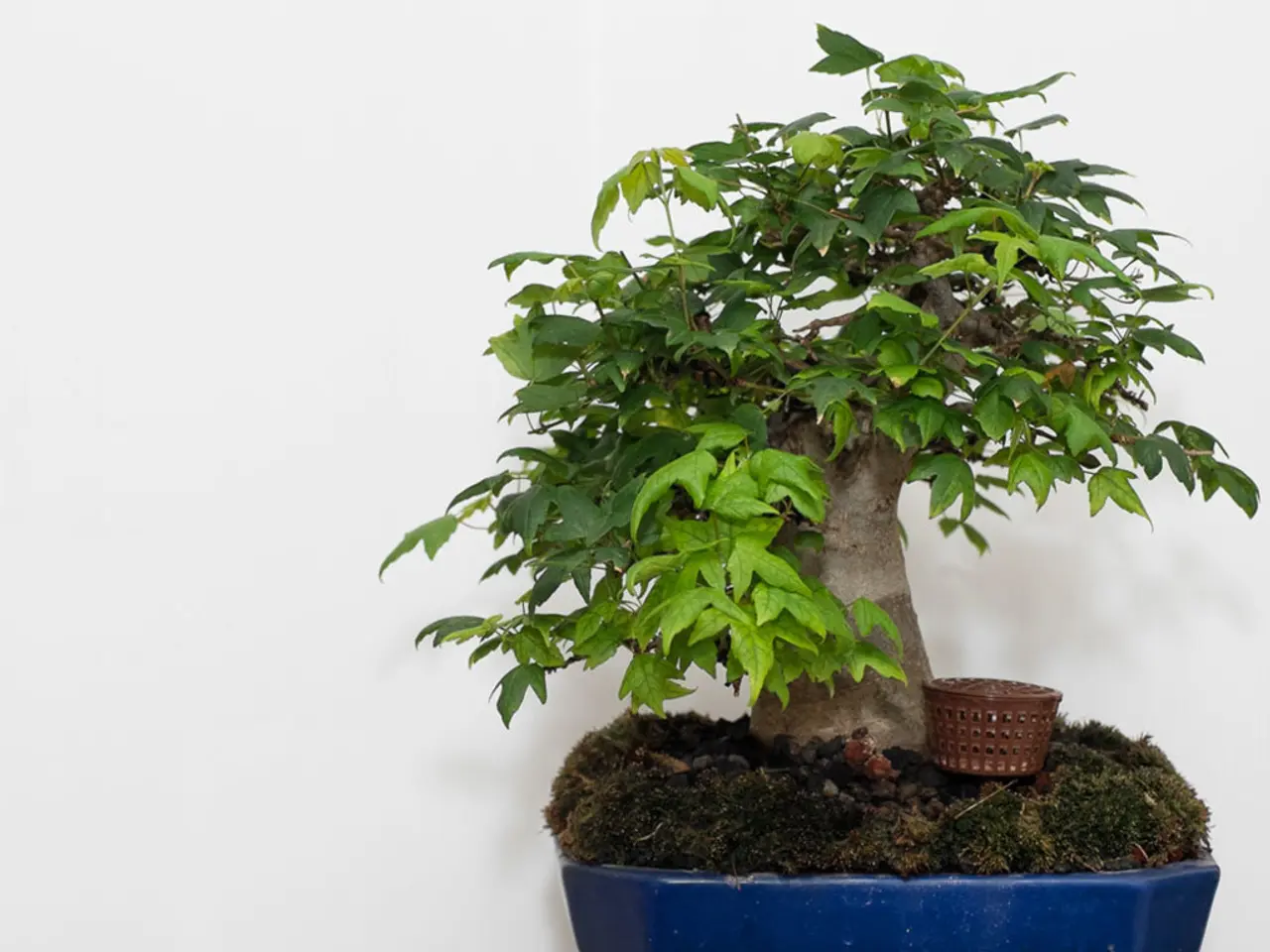Bonsai Winter Pruning Guidelines: Crucial Care Strategies During Tree's Dormant State
Winter is a crucial season for bonsai care, and pruning during this dormant period can be highly beneficial for the tree's health and structure. However, it's essential to approach winter bonsai pruning with care and precision to ensure a successful outcome.
Pruning During Dormancy
Since most bonsai trees enter a dormant phase in winter, this is an ideal time to prune. Pruning during dormancy reduces stress and the risk of damage, as the tree is not actively growing. Structural pruning, selective cutting for health, and careful use of sharp tools are the essential techniques for winter bonsai pruning.
Structural Pruning
Remove weak, crossing, or overcrowded branches during winter to develop strong primary and secondary branch structure. This helps define the tree’s shape and promotes better growth in spring.
Selective Cutting for Health
Pruning dead or damaged branches prevents disease and improves airflow and light penetration, which benefits overall tree health.
Using Sharp Tools and Careful Cuts
Minimizing wounds is crucial, especially for species with slower healing, such as Dwarf Black Olive bonsai. Sharp tools reduce the risk of infection.
Benefits of Winter Pruning
Winter pruning offers several advantages for bonsai health and structure:
- Encourages strong branch development: By focusing on primary and secondary structure in winter, the tree can put energy into developing these frameworks once active growth resumes.
- Improves energy balance: Removing water shoots and excess growth prevents wasteful energy use and directs vigor to desirable branches.
- Prevents disease and rot: Clearing out dead or crowded branches reduces fungal and pest problems during winter and beyond.
- Sets the stage for spring growth: Well-planned winter pruning leads to better ramification and refined structure for the growing season, ultimately creating a more aesthetically pleasing and healthy bonsai.
Additional Winter Care Considerations
Winter pruning is often combined with other winter care such as proper protection from cold and vermin to safeguard the bonsai’s health during dormancy.
Pruning Evergreen Species
Evergreen bonsai species, such as juniper, pine, and spruce, require nuanced pruning considerations during winter to prevent damage to their delicate needles and ensure a healthy, balanced structure.
Pruning Thick Branches
When pruning thick bonsai branches, a high-quality, sharp concave cutter or bonsai saw is essential. These tools provide clean cuts, minimize tearing, and reduce the risk of damage to the surrounding tissue and bark.
Protecting Against Wind Damage
To protect a bonsai from wind damage during pruning, temporarily relocate it to a sheltered location or create a windbreak using burlap or snow fencing.
Tailored Pruning Approaches
Different bonsai species exhibit unique characteristics and growth patterns, necessitating tailored pruning approaches to accommodate their specific needs and guarantee maximum health and aesthetic appeal.
Frequently Asked Questions
Frequently asked questions about bonsai pruning include topics such as pruning during warm winter spells, protecting bonsai from wind damage, pruning thick branches, the impact of winter pruning on spring growth, and pruning roots during the winter dormant season.
Choosing the Right Tool
Enthusiasts should be mindful of the best tool for pruning their specific bonsai species, as different tools may be more suitable for certain species or branches.
During a warm winter spell, it's tempting to prune a bonsai, but resist the urge, as it can stimulate new growth, making the bonsai vulnerable to frost damage when cold temperatures return. To confirm successful bonsai winter care, enthusiasts should prune only the necessary branches, use sharp, clean tools, and avoid pruning during extreme cold snaps.
When pruning bonsai trees during winter, it's important to focus on home-and-garden activities like gardening and use this dormant period for structural pruning, selective cutting for health, and careful use of sharp tools to promote stronger branch development, improve energy balance, prevent disease, and set the stage for better spring growth. Additionally, evergreen bonsai species require nuanced pruning techniques specifically catered to their delicate needles to ensure a healthy, balanced structure.






